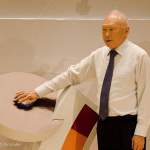Lee Kuan Yew, who died this week aged 91, transformed what a British politician called a “pestilential and immoral cesspool” into a glittering global city with the world’s highest per capita income and the highest percentage of home ownership. The miracle prompted observers to wonder what he might have achieved, if fate had given him a bigger stage. We have special reason to be grateful to a man who, according to Jagat Mehta, a former foreign secretary, understood India’s potential before Indians did. He was behind the moves introducing India to the Association of South-east Asian Nations.
The actual moves took place under his successor, Prime Minister Goh Chok Tong. But as Ong Keng Yong, Singapore’s high commissioner in Delhi before becoming ASEAN secretary-general, put it, the strategy was Lee’s although Goh provided the stamina. Lee wanted to involve India in the region even before ASEAN was born, suggesting to Indira Gandhi that India should “enforce a Monroe Doctrine for Asia” when the British left. He never ceased urging India to strengthen its economic muscle and take its rightful place in international affairs. As he warned South-east Asian students in Britain in 1962, with China rising, unless India “emerged”, Asia would “submerge”.
He attributed his strategic vision to Jawaharlal Nehru and Sardar K.M. Panikkar. He spoke with reverence of India’s civilizational role in Asia, comparing it to Rome and Greece in Europe, and frequently drew attention to Singapore’s Sanskrit name. Nehru, whose Tryst-with-Destiny speech he had heard mesmerised as a Cambridge undergraduate, became his god that failed for allowing populist politics to erode that early promise.
He was far more abrasive at home, giving short shrift to adversaries. A series of lawsuits ruined J.B. Jeyaretnam, the solitary opposition MP. A political activist Chia Thye Poh, spent 32 years in detention. Lee believed that good governance didn’t depend on human rights or liberal democracy. Nor would he accept the press as the guarantor of national integrity since commerce-driven media houses were riddled with corruption. Tom Abraham, India’s first high commissioner to Singapore and a lifelong friend, summed up the contradiction, “I am quite aware of the beatings and the tortures and all of what happened there. But the fact remains that on balance I think the People’s Action Party (which Lee founded and which remains in power) has done a remarkable job.”
Lee’s Indian form master at Raffles Institution, M.N. Campos, wrote prophetically, “Harry Lee Kuan Yew is a determined worker for a place of distinction. He is likely to attain a high position in life.” Lee was an outstanding scholar, earning a Double Starred First Class Honours at Cambridge. He was also a brilliant lawyer, and defended radical students and postal and port workers without forfeiting the establishment’s confidence.
It’s said that when he left Cambridge, his tutor said, “Well, Harry, when you get back to Singapore, I hope you’ll keep the flag flying!” Lee shot back, “When I get back, I will make it my duty to get the flag down!” But he claimed his political career was accidental, the result of the three and a half years of wartime Japanese occupation. The silver lining to those years brightened his life ever afterwards. He began courting Kwa Geok Choo, herself also a successful lawyer. “That was the happiest time in my life,” Lee recollected. Their marriage was one of the most enduring unions the world has known. Mrs Lee died in her sleep in 2010. Prime Minister Lee Hsien Loong is one of their two sons.
No other democratic party in the world has enjoyed the PAP’s long lease of power. When it captured 43 out of 51 seats in May 1959, the 35-year-old Lee drove himself to Government House to be sworn in as the first prime minister. Perhaps that explains his 2007 lecture to Mumbai celebrities to eschew the emblems of rank on their cars.
His first big undertaking was to set up a Housing and Development Board which made Singapore the international byword for clean and comfortable public housing.
The next was to merge Singapore with an enlarged Malaysia. The union lasted barely two years. An emotionally overcome Lee’s first action after announcing the end in 1965 was to seek Lal Bahadur Shastri’s help in building up Singapore’s army. Shastri didn’t reply.
Lee and Singapore turned elsewhere, to Israel for military training, to US multinationals for economic cooperation. It was what he always desired. But India was Lee’s pass to the Afro-Asian world, and he clung to it as he gave full play to his own economic and political pragmatism. He visited India 16 or 17 times since the first trip in 1959, observing changes, meeting people, picking up ideas. In contrast, his first visit to China was not until 1976 when he snubbed Hua Guo Feng at their initial meeting. The Chinese premier gave him a copy of Neville Maxwell’s India’s China War with the remark that it was a “correct version” of what had happened. Lee returned the gift, saying politely it was China’s version. There was another, the Indian version. He wasn’t taking sides.
Sunanda Datta-Ray is an author and journalist. He was previously editor of the Statesman and spent many years in Singapore as consultant with the Straits Times newspaper group, teaching at Nanyang Technological University and researching his book at the Institute of South-east Asian Studies.
This article was exclusively written for Gateway House: Indian Council on Global Relations. You can read more exclusive content here.
For interview requests with the author, or for permission to republish, please contact outreach@gatewayhouse.in.
© Copyright 2015 Gateway House: Indian Council on Global Relations. All rights reserved. Any unauthorized copying or reproduction is strictly prohibited


